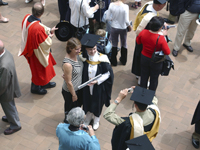Spaceborne Imaging Technology - ZEIT8221
Faculty: UNSW Canberra at ADFA
School: School of Engineering & Information Technology @ UNSW Canberra at ADFA
Course Outline: ZEIT8221 Course Outline
Campus: UNSW Canberra at ADFA
Career: Postgraduate
Units of Credit: 6
EFTSL: 0.12500 (more info)
Indicative Contact Hours per Week: 3
Enrolment Requirements:
Restricted to students enrolled in Graduate Diploma or Masters programs.
CSS Contribution Charge: 2 (more info)
Tuition Fee: See Tuition Fee Schedule
Further Information: See Class Timetable
View course information for previous years.
Description
Please Note
Learning Outcomes
1. Apply Planck’s black body radiation law to explain the wavelength selections for different types of remote sensing.
2. Describe the spectral characteristics of typical materials and objects
3. Describe the backscattering characteristics of typical materials and objects
4. Undertake image processing and classification
Delivery Mode
Topics
- Introduction and Imaging Modalities. Optical Remote Sensing Systems. Spectral Reflectance Characteristics of Earth Surface Features.
- Distortions in Optical Image Data and Correction.
- Radiometric and Geometric Enhancement Techniques.
- Interpretation of Image Data by a Human Analyst.
- Introduction to Machine Interpretation Techniques.
- Quantitative Analysis - Supervised classification technique.
- Quantitative Analysis - Unsupervised classification techniques
- Imaging Spectrometry.
Assessment
Assignment 2 30%
Open book exam 40%
Course Texts
J.A. Richards and X. Jia, Remote Sensing Digital Image Analysis, Springer-Verlag, Berlin, 4e, 2006.
T.M. Lillesand, R.W. Kiefer and Jonathan W. Chipman, Remote Sensing and Image Interpretation, Wiley, 5th ed., 2004, or 6th ed., 2007.
Recommended Texts:
R.A. Schowengerdt, Remote Sensing, Models and Methods for Image Processing, Academic Press, 3rd ed., 2006.
F.T. Ulaby, R.K. Moore & A.K. Fung, Microwave Remote Sensing: Active and Passive. Vols 1,2,3, Reading, Mass, 1986.
Software:
Nil
Resources









